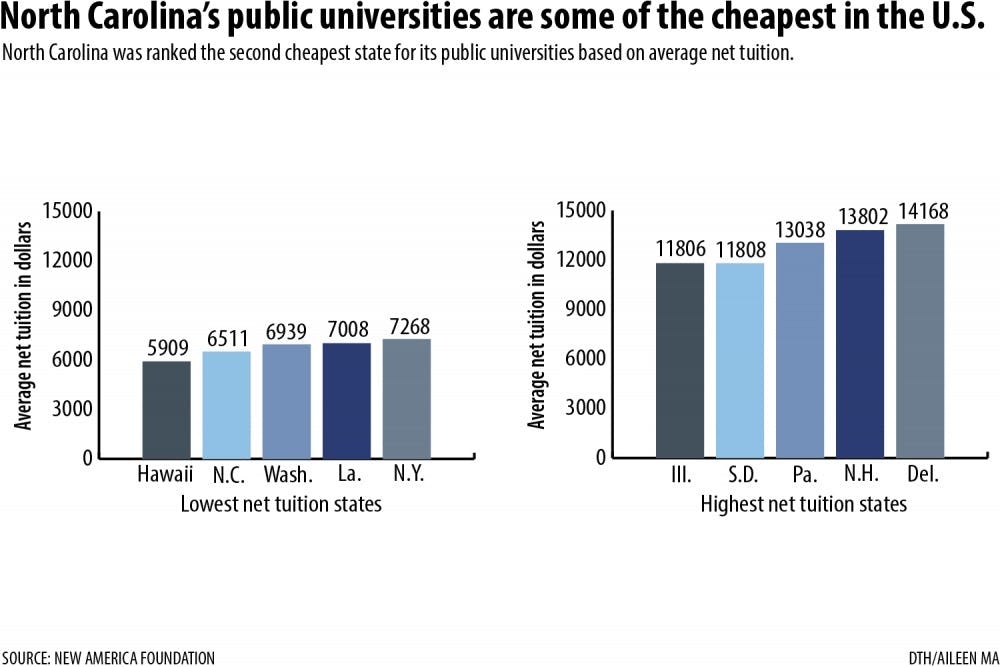The report examines how colleges’ pursuit of revenue is hurting low-income students. North Carolina’s average net price of $6,511 is higher than that of Hawaii and lower than those in California, Louisiana, New York and Washington.
Stephen Burd, a senior policy analyst at the New America Foundation, said certain states have moved to a high tuition and high financial aid model.
Patrick Callan, president of the California-based Higher Education Policy Institute, said college affordability has declined across the country during the past decade.
“North Carolina does pretty well at many things,” Callan said. “But to be in the top five in a situation where college affordability is declining nationwide, you’re just doing less poorly than other states.”
Harry Painter, an analyst at the right-leaning Pope Center for Higher Education Policy, said the system’s tuition level is an artificial phenomenon.
“The costs of attending school at UNC institutions are actually comparable to costs elsewhere, but they are shifted to the taxpayers,” he said in an email.
Callan said his group measures affordability by taking the sum of the state’s median family income and all financial grant aid acquired, finding the proportion of income needed to send someone to a two- or four-year college, and then determining whether that proportion is going up over time.
“Just because North Carolina has declined less doesn’t mean they haven’t lost ground,” Callan said. “From 2006 to 2012, the percent of family income it took to send someone to college increased from 13 percent to 18 percent.”




